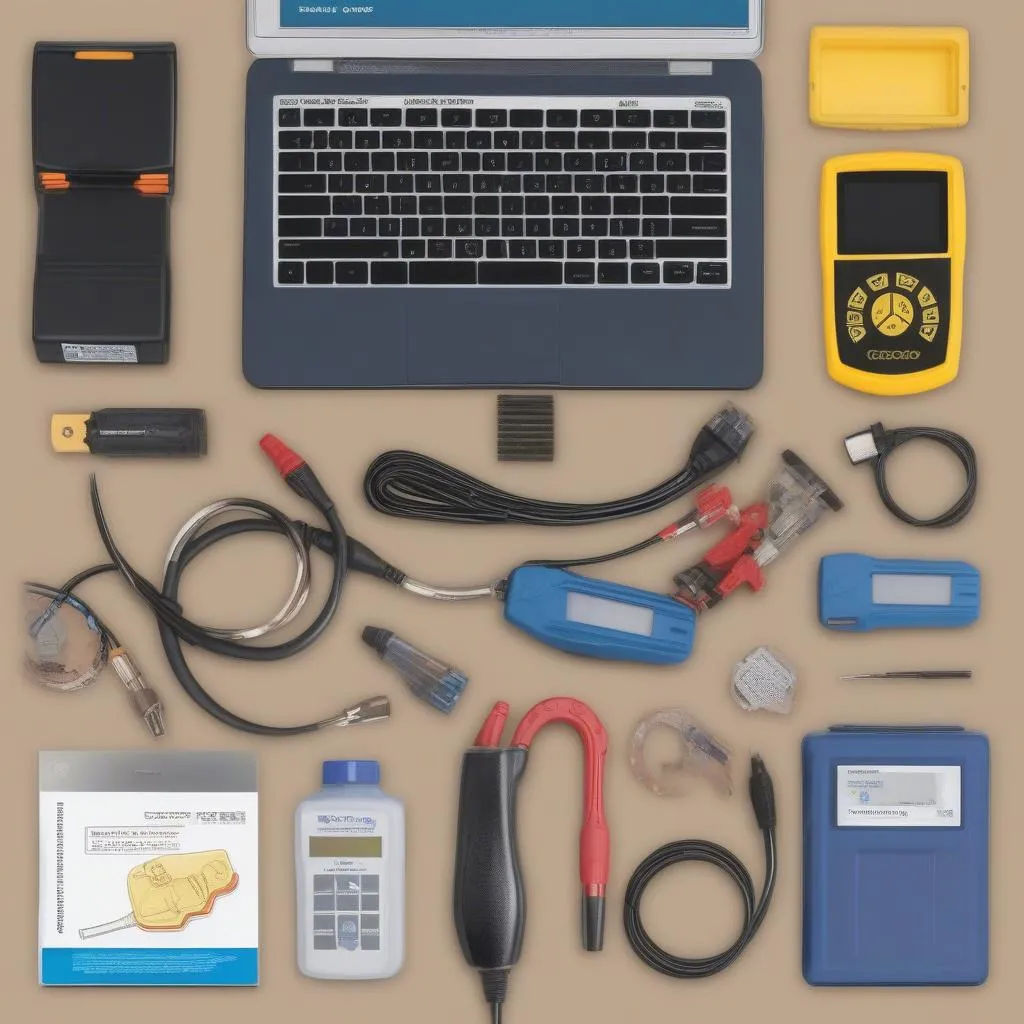The brake warning light on your 1988 Dodge B-350 is an essential safety feature. When it illuminates, it’s signaling a potential issue within your braking system that requires immediate attention. While this might seem daunting, particularly for those unfamiliar with automotive mechanics, this guide will walk you through the common causes and solutions for a brake warning light switch problem on a 1988 Dodge B-350.
Understanding the Brake Warning Light System
Before delving into troubleshooting, it’s crucial to understand how the brake warning light system functions. The heart of this system is a simple switch, often located above the brake pedal arm, that is designed to activate in two scenarios:
- Low Brake Fluid: When the brake fluid level in the master cylinder drops below a safe threshold, the float within the reservoir triggers the switch, illuminating the warning light.
- Engaged Parking Brake: Activating your parking brake also engages the switch, serving as a reminder to disengage it before driving.
Common Causes and Solutions
Here’s a breakdown of common culprits behind a malfunctioning brake warning light switch on your 1988 Dodge B-350, along with ways to address them:
1. Low Brake Fluid
The most frequent offender is simply low brake fluid. Over time, brake pads wear down, requiring more fluid to occupy the space within the brake lines.
Solution:
- Check the Fluid Level: Open the hood and locate the brake fluid reservoir (usually a clear plastic container). Ensure the fluid level is within the “Min” and “Max” lines marked on the reservoir.
- Add Brake Fluid: If the level is low, carefully add the correct type of brake fluid (DOT 3 or DOT 4, as specified in your owner’s manual) until it reaches the “Max” line. Avoid overfilling.
2. Faulty Brake Warning Light Switch
If the brake fluid level is adequate, the switch itself may be faulty. Years of use, corrosion, or a simple malfunction can render it ineffective.
Solution:
- Locate the Switch: The switch is typically found above the brake pedal arm.
- Test the Switch: With the ignition off, disconnect the electrical connector from the switch. Use a multimeter to check for continuity between the switch terminals. Pressing the brake pedal should create continuity. If there’s no change in continuity, the switch needs replacing.
- Replace the Switch: If the switch is faulty, replacement is straightforward. Disconnect the electrical connector and unscrew the old switch. Install the new switch, ensuring it’s properly adjusted.
3. Worn Brake Pads
While worn brake pads don’t directly impact the warning light switch, they can lead to low brake fluid, triggering the warning light.
Solution:
- Inspect Brake Pads: Check the thickness of your brake pads through the spaces between the wheel spokes. If they appear thin or you notice a scraping noise when braking, it’s time for a replacement.
- Replace Brake Pads: Replacing brake pads is best left to a professional if you’re not comfortable with automotive work.
4. Brake Fluid Leak
A less common but more serious issue is a brake fluid leak. This requires immediate attention.
Solution:
- Inspect for Leaks: Look for signs of brake fluid leaks around the master cylinder, brake lines, and near the wheels.
- Seek Professional Help: A brake fluid leak necessitates immediate professional repair. Do not drive the vehicle until the leak is addressed.
When to Seek Professional Help
While this guide provides a starting point for troubleshooting, certain situations warrant the expertise of a qualified mechanic:
- You’re uncomfortable working with automotive components.
- You’ve tried the troubleshooting steps and the issue persists.
- You suspect a brake fluid leak.
- Your brake warning light remains illuminated while driving, even after addressing low brake fluid.
Conclusion
Addressing a brake warning light switch issue on your 1988 Dodge B-350 is crucial for maintaining your safety on the road. By understanding the common causes and following the solutions outlined, you can often diagnose and address the problem yourself. However, always prioritize safety and seek professional help when needed.


